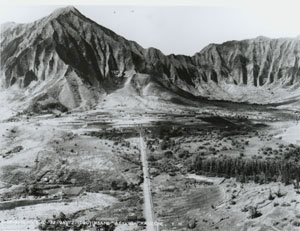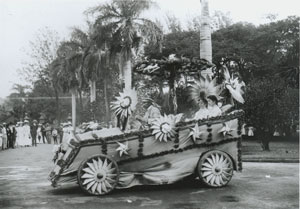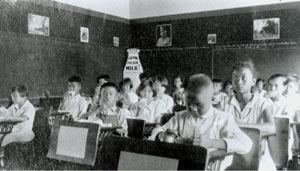Themes: Disease and Health
For those pursuing research in the humanities and social sciences, an abundance of statistical information on mortality and morbidity among racial and ethnic groups in Hawai'i over time exists. Eleanor Nordyke's and Robert Schmitt's works are both easily accessible and highly useful. However, extended historical studies that take disease as their subject are remarkably few. Two works in particular, both published within the last 10 years, are especially important in understanding the horrific impact of disease upon Hawaiian society and culture at the point of contact and beyond: O. A. Bushnell's The Gifts of Civilization and David Stannard's Before the Horror. Although much of the literature about Hawai'i cites the decimation of the Hawaiian population as a key factor in the disintegration of Hawaiian culture, and the historical record is replete with expressions of genuine alarm that Hawaiians were doomed to extinction, it is surprising that only relatively recently have two extended works on this topic made their appearance.

In addition to journal articles that consider episodes of disease from a historical perspective, late 18th and 19th century memoirs, autobiographical works, travel narratives and other primary documentary sources offer eyewitness accounts of epidemics that swept through the Hawaiian Islands. Governmental health reports provide statistics as well as information about the sources of and responses to threats to public health.

Health, the other focus in this section, indicates more than a concern with disease. During the early Territorial period, there was increased desire to regulate and standardize those elements of life that affected the health -- physical, mental, and moral -- of individuals and the community. By examining sanitation reports, which frequently contain photographs, tables, graphs and maps (see relevant bibliographies), it is possible to literally see the risks and anxieties of the times. The influx of population into urban Honolulu produced a pattern that other urban areas across the U.S. experienced: crowded living in inadequate housing; substandard and inadequate sanitation; insect and rodent infestations; unhygienic conditions under which food was produced, sold, and consumed; and the accompanying crime, degradation and immorality, real and imagined, that was believed to be the inevitable nature of the slums. By examining the function of charity, correction, institutionalization, the increasing desire for regulation and standardization -- as described in newspapers, governmental reports, and boards of directors reports, and as shown on maps that are concerned with water management, the construction of sewage lines, routes and frequency of garbage collection, and so forth -- one can witness the increasing attempts to control a changing physical environment and an increasingly diverse, and perhaps fractious urban population.

Arnold, Harry L. Jr. M.D. "American Medicine in Hawaii." New England Journal of Medicine 261 (1959), 694-699.
Briggs, L. Vernon. Experiences of a Medical Student in Honolulu,and on the Island of Oahu. 1881. Boston: David D. Nickerson Company, 1926.
Bushnell, Andy. "The "Horror" Reconsidered: An Evaluation of the Historical Evidence for Population decline in Hawai'i, 1778-1803." Paper for History 610 University of Hawai'i, 1992.
Bushnell, O. A. The Gifts of Civilization: Germs and Genocide in Hawai'i. Honolulu: University of Hawai'i Press, 1993.
Crosby, A. W. "Hawaiian Depopulation as a model for the Amerindian Experience" in Epidemics and Ideas: Essays on the Historical Perception of Pestilence. Eds. Terrence Rager and Paul Slack. Cambridge: Cambridge University Press, 1992, 175-201.
Crosby, Jr., Alfred W. Epidemic and Peace, 1918. Westport: Greenwood Press, 1976.
Goodhue, Edward S. "The Adequate Punishment and Care of Defectives and the Insane; being a reply to the letters of Julius Commedius Brutas, "The Doctorate Series, 1913.
________________ . "The Terrible Trinity." Reprinted from The American Practitioner, May 1913.
Kenney, Scott G. "Mormons and the Smallpox Epidemic of 1852." The Hawaiian Journal of History, vol. 13 (1997), 1-26.
Nordyke, Eleanor C., The Peopling of Hawaii, Second edition. Honolulu: University of Hawaii Press, 1989.
Schmitt, Robert. Demographic Statistics of Hawaii: 1778-1965. Honolulu: University of Hawai'i Press, 1968.
Stannard, David. Before the Horror: The Population of Hawai'i on the Eve of Western Contact. Honolulu: Social Science Research Institute, University of Hawai'i, 1989.
